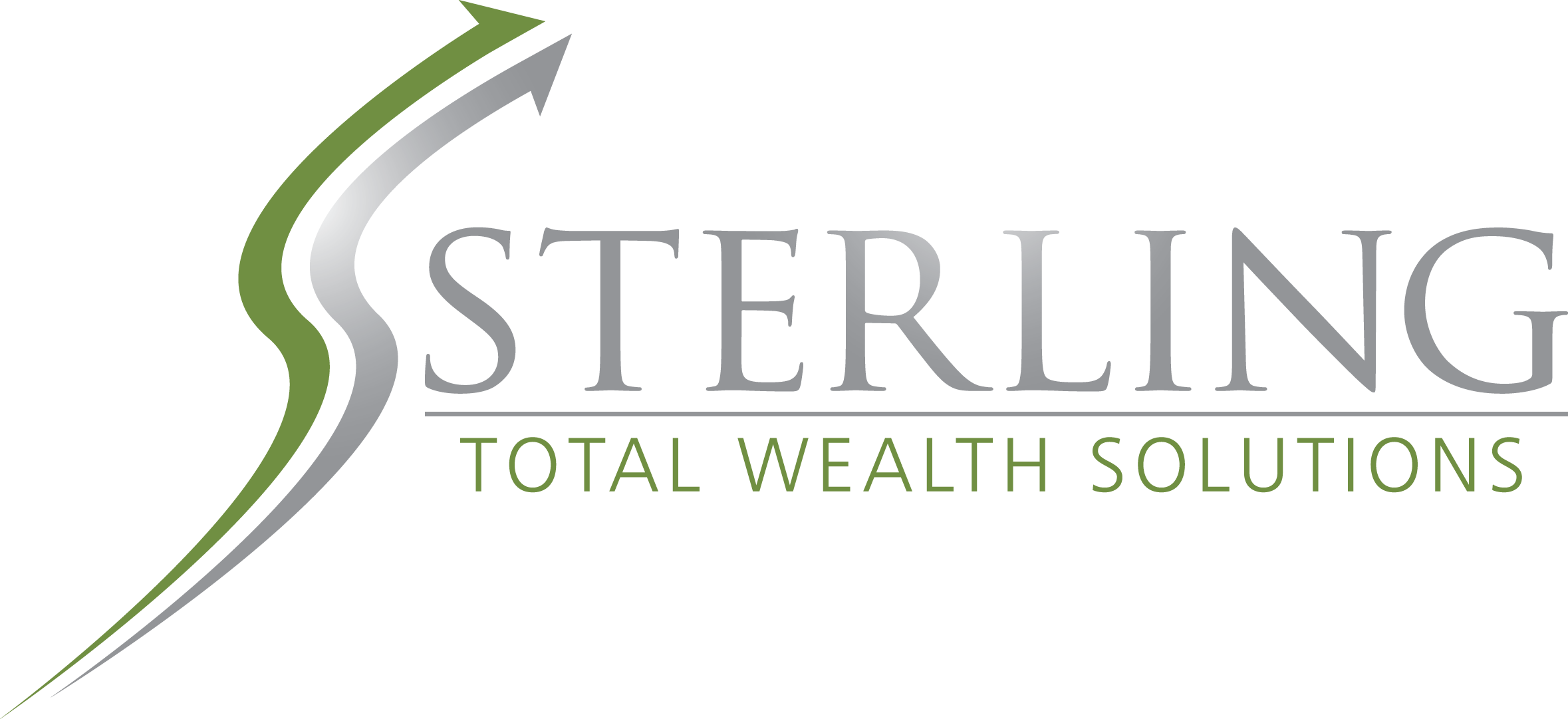In this month’s recap: The burgeoning economic recovery and decreasing number of COVID-19 infections lifted stocks.
Monthly Economic Update
Monthly Economic Update | Presented by Sterling Total Wealth Solutions | March 2021
U.S. Markets
Stocks notched a solid gain in February thanks to growing optimism surrounding the economic recovery and decreasing number of COVID-19 infections.
The Dow Jones Industrial Average led, picking up 3.17 percent. The Standard & Poor’s 500 Index rose 2.61 percent, while the Nasdaq Composite added 0.93 percent.1
Singular Focus
Investors focused on fundamentals during the month as the U.S. presidential election and a social media trading frenzy moved to the background.
Attention was centered on three key inputs: corporate earnings, economic data, and interest rates—all three of which influence longer-term stock valuations.
Corporate Earnings
With the fourth quarter earnings season coming to a close, many companies surprised analysts.
Of the 83 percent of S&P 500 companies that delivered reports, 79 percent of those reported results that exceeded Wall Street expectations. Upon closer evaluation the companies, on average, reported earnings that are 14.6 percent above estimates, which are substantially above the 6.3 percent five-year average.2
Communication Services and Information Technology were the sectors that lead the reporting of positive earnings surprises. Real Estate, Energy, and Utilities lagged in beating earnings estimates.3
Economic Data
Economic strength was evident in January’s retail sales, industrial production, and durable goods orders. However, the labor market remained stubbornly weak. The economic recovery narrative was buoyed by falling COVID-19 numbers, as well as improvements in vaccine distribution.
Bond Yields
Treasury yields rose last month, with 10-year yields closing February at 1.46 percent and 30-year yields at 2.11 percent. Bond yields may increase for several reasons, some of which may be good (strong economic growth) and some concerning (accelerating inflation).4
One question that income-seeking advisors may ask is: “At what point do income-seeking investors move from stocks to higher-yielding bonds?” That query may be answered if the 10-year Treasury yield moves above the dividend yield on the S&P 500.
Sector Scorecard
Industry sectors were mixed in February, with Communication Services (+2.96 percent), Energy (+18.44 percent), Financials (+9.36 percent), Industrials (+4.15 percent), Materials (+0.69 percent), and Real Estate (+2.29 percent) advancing. Meanwhile, losses were felt in Consumer Discretionary (-6.00 percent), Consumer Staples (-2.10 percent), Health Care (-4.03 percent), Technology (-2.94 percent), and Utilities (-7.24 percent).5
What Investors May Be Talking About in March
Although the Fed remains committed to its zero-interest-rate policy, investors may be monitoring how the financial markets react to any pickup in inflation.6
Investors appear concerned about the Fed’s protracted easy monetary stance and federal fiscal spending in response to the pandemic.
For now, inflation remains within the Fed’s target range. However, expectations are rising, with the five-year forward expectations rate reaching a level not seen since 2019.7
World Markets
Overseas markets were mixed at the start of the year, with the MSCI-EAFE Index gaining 0.56 percent.6
In Europe, France lost 2.74 percent while the United Kingdom slipped 0.82 percent. Germany provided a spark, picking up 5.21 percent.7
The Pacific Rim markets performed better. Hong Kong gained 3.87 percent and Japan added 0.80 percent. Australia tacked on 0.31 percent.8
Indicators
Gross Domestic Product: The nation’s economy grew by 4.0 percent in the fourth quarter. For the full year, GDP dropped 3.5 percent.9
Employment: Total nonfarm payrolls declined by 140,000, led by losses in the hospitality and leisure sectors. The unemployment rate remained steady at 6.7 percent.10
Retail Sales: Retail sales fell 0.7 percent. Excluding motor vehicles and gasoline, consumer purchases fell a more substantial 2.1 percent.11
Industrial Production: Industrial production jumped 1.6 percent, well ahead of consensus estimates of a 0.5 percent increase.12
Housing: Housing starts increased by 5.8 percent, powered by a 12.0 percent jump in single-family homes.13
Existing-home sales reached their highest level in 14 years, with an increase of 0.7 percent in December. Sales were 22 percent higher than in December 2019.14
New home sales rose by 1.6 percent as the median price of new homes surged by 8.0 percent from a year ago.15
Consumer Price Index: Consumer prices rose 0.4 percent in December, driven by an 8.4 percent jump in gasoline prices. The inflation rate for 2020 came in at 1.4 percent.16
Durable Goods Orders: New orders for long-lasting goods increased 0.2 percent. Although it was the eighth straight month of gains, the figure was below expectations, reflecting the general economic softness in December.17
TIP OF THE MONTH

Too many people put a majority of their assets into a single stock (usually a company stock). Remember the merits of diversification. Diversification is an approach to help manage investment risk. It does not eliminate the risk of loss if security prices decline.
The Fed
Minutes from the last Federal Open Market Committee (FOMC) meeting indicate that the Fed has reaffirmed its policy to keep short-term interest rates at current levels and continue its bond purchase program, citing uncertainty about the economy’s continued recovery.
While some Fed officials thought that near-term inflation might exceed its 2 percent target, they also believed that any price pressure would be short-lived.20
“At the Federal Reserve, we are strongly committed to achieving the monetary policy goals that Congress has given us: maximum employment and price stability,” Federal Reserve Chair Jerome Powell stated in his semiannual monetary policy report to the Congress.21
“Since the beginning of the pandemic, we have taken forceful actions to provide support and stability, to ensure that the recovery will be as strong as possible, and to limit lasting damage to households, businesses, and communities.”
|
MARKET INDEX |
Y-T-D CHANGE |
February 2021 |
|
DJIA |
3.17% |
1.06% |
|
NASDAQ |
2.36% |
0.93% |
|
S&P 500 |
1.47% |
2.61% |
|
|
||
|
BOND YIELD |
Y-T-D |
February 2021 |
|
10 YR TREASURY |
0.54% |
1.46% |
Sources: Yahoo Finance, February 28, 2021
The market indexes discussed are unmanaged and generally considered representative of their respective markets. Individuals cannot directly invest in unmanaged indexes. Past performance does not guarantee future results. U.S. Treasury Notes are guaranteed by the federal government as to the timely payment of principal and interest. However, if you sell a Treasury Note prior to maturity, it may be worth more or less than the original price paid.
QUOTE OF THE MONTH

“Listen to ideas that make you think hard, not just opinions that make you feel good.”
ADAM GRANT
THE MONTHLY RIDDLE

Some months have 30 days, others 31. How many have 28?
LAST MONTH’S RIDDLE: If an electric train is going south and the wind is blowing north, what direction is the smoke going?
ANSWER: Electric trains do not produce smoke.
Securities offered through Registered Representatives of Cambridge Investment Research, Inc., a Broker/Dealer, Member FINRA/SIPC. Advisory services offered through Cambridge Investment Research Advisors, Inc., a Registered Investment Advisor. Sterling Total Wealth Solutions and Cambridge are not affiliated.
To learn more about Sterling Total Wealth Solutions, visit us on the web at www.sterlingtotalwealthsolutions.com
Know someone who could use information like this? Please feel free send us their contact information via phone or email. (Don’t worry – we’ll request their permission before adding them to our mailing list.)
This material was prepared by MarketingPro, Inc., and does not necessarily represent the views of the presenting party, nor their affiliates. The information herein has been derived from sources believed to be accurate. Please note – investing involves risk, and past performance is no guarantee of future results. Investments will fluctuate and when redeemed may be worth more or less than when originally invested. This information should not be construed as investment, tax or legal advice and may not be relied on for the purpose of avoiding any Federal tax penalty. This is neither a solicitation nor recommendation to purchase or sell any investment or insurance product or service, and should not be relied upon as such. All market indices discussed are unmanaged and are not illustrative of any particular investment. Indices do not incur management fees, costs, or expenses. Investors cannot invest directly in indices. All economic and performance data is historical and not indicative of future results. The Dow Jones Industrial Average is a price-weighted index of 30 actively traded blue-chip stocks. The NASDAQ Composite Index is a market-weighted index of all over-the-counter common stocks traded on the National Association of Securities Dealers Automated Quotation System. The Standard & Poor’s 500 (S&P 500) is a market-cap weighted index composed of the common stocks of 500 leading companies in leading industries of the U.S. economy. The Russell 2000 Index measures the performance of the small-cap segment of the U.S. equity universe. The CBOE Volatility Index® (VIX®) is a key measure of market expectations of near-term volatility conveyed by S&P 500 stock index option prices. NYSE Group, Inc. (NYSE:NYX) operates two securities exchanges: the New York Stock Exchange (the “NYSE”) and NYSE Arca (formerly known as the Archipelago Exchange, or ArcaEx®, and the Pacific Exchange). NYSE Group is a leading provider of securities listing, trading and market data products and services. The New York Mercantile Exchange, Inc. (NYMEX) is the world’s largest physical commodity futures exchange and the preeminent trading forum for energy and precious metals, with trading conducted through two divisions – the NYMEX Division, home to the energy, platinum, and palladium markets, and the COMEX Division, on which all other metals trade. The SSE Composite Index is an index of all stocks (A shares and B shares) that are traded at the Shanghai Stock Exchange. The CAC-40 Index is a narrow-based, modified capitalization-weighted index of 40 companies listed on the Paris Bourse. The FTSEurofirst 300 Index comprises the 300 largest companies ranked by market capitalisation in the FTSE Developed Europe Index. The FTSE 100 Index is a share index of the 100 companies listed on the London Stock Exchange with the highest market capitalization. Established in January 1980, the All Ordinaries is the oldest index of shares in Australia. It is made up of the share prices for 500 of the largest companies listed on the Australian Securities Exchange. The S&P/TSX Composite Index is an index of the stock (equity) prices of the largest companies on the Toronto Stock Exchange (TSX) as measured by market capitalization. The Hang Seng Index is a free float-adjusted market capitalization-weighted stock market index that is the main indicator of the overall market performance in Hong Kong. The FTSE TWSE Taiwan 50 Index is a capitalization-weighted index of stocks comprises 50 companies listed on the Taiwan Stock Exchange developed by Taiwan Stock Exchange in collaboration with FTSE. The MSCI World Index is a free-float weighted equity index that includes developed world markets and does not include emerging markets. The Mexican Stock Exchange, commonly known as Mexican Bolsa, Mexbol, or BMV, is the only stock exchange in Mexico. The U.S. Dollar Index measures the performance of the U.S. dollar against a basket of six currencies. Additional risks are associated with international investing, such as currency fluctuations, political and economic instability and differences in accounting standards. This material represents an assessment of the market environment at a specific point in time and is not intended to be a forecast of future events, or a guarantee of future results. MarketingPro, Inc. is not affiliated with any person or firm that may be providing this information to you. The publisher is not engaged in rendering legal, accounting or other professional services. If assistance is needed, the reader is advised to engage the services of a competent professional.
CITATIONS:
- The Wall Street Journal, February 28, 2021
- FactSet Research, February 19, 2021
- FactSet Research, February 19, 2021. “Earnings Insights”
- U.S. Department of the Treasury, February 2021
- SectorSpdr.com, February 28, 2021
- The Wall Street Journal, February 24, 2021
- Fred.StLouisFed.org, February 2021
- MSCI.com, February 28, 2021
- MSCI.com, February 28, 2021
- MSCI.com, February 28, 2021
- CNBC.com, February 25, 2021
- The Wall Street Journal, February 5, 2021
- The Wall Street Journal, February 13, 2021
- FederalReserve.gov, February 17, 2021
- CNBC.com, February 18, 2021
- The Wall Street Journal, February 19, 2021
- Bloomberg.com, February 24, 2021
- CNBC.com, February 10, 2021
- The Wall Street Journal, February 25, 2021
- The Wall Street Journal, February 17, 2021
- FederalReserve.gov, February 23, 2021
